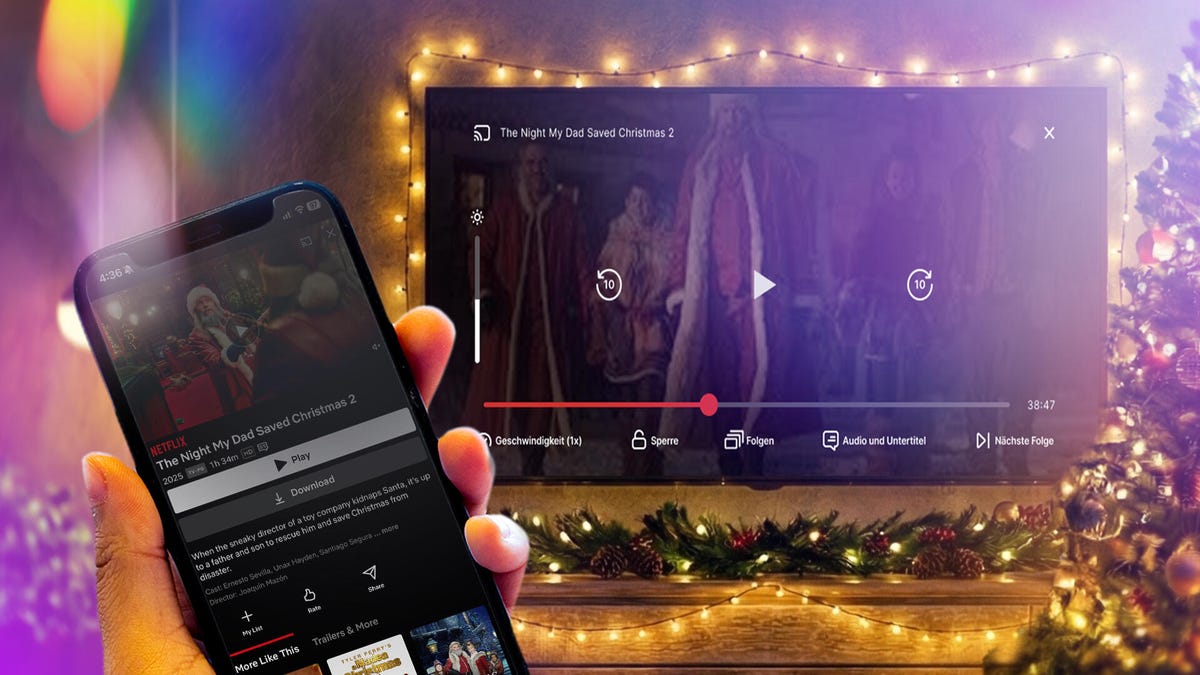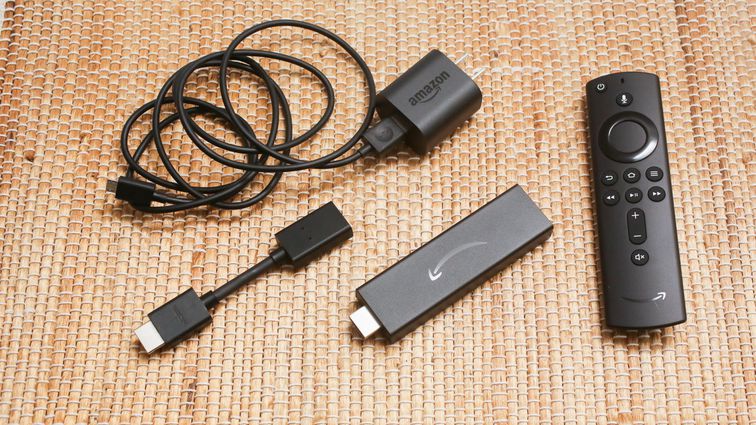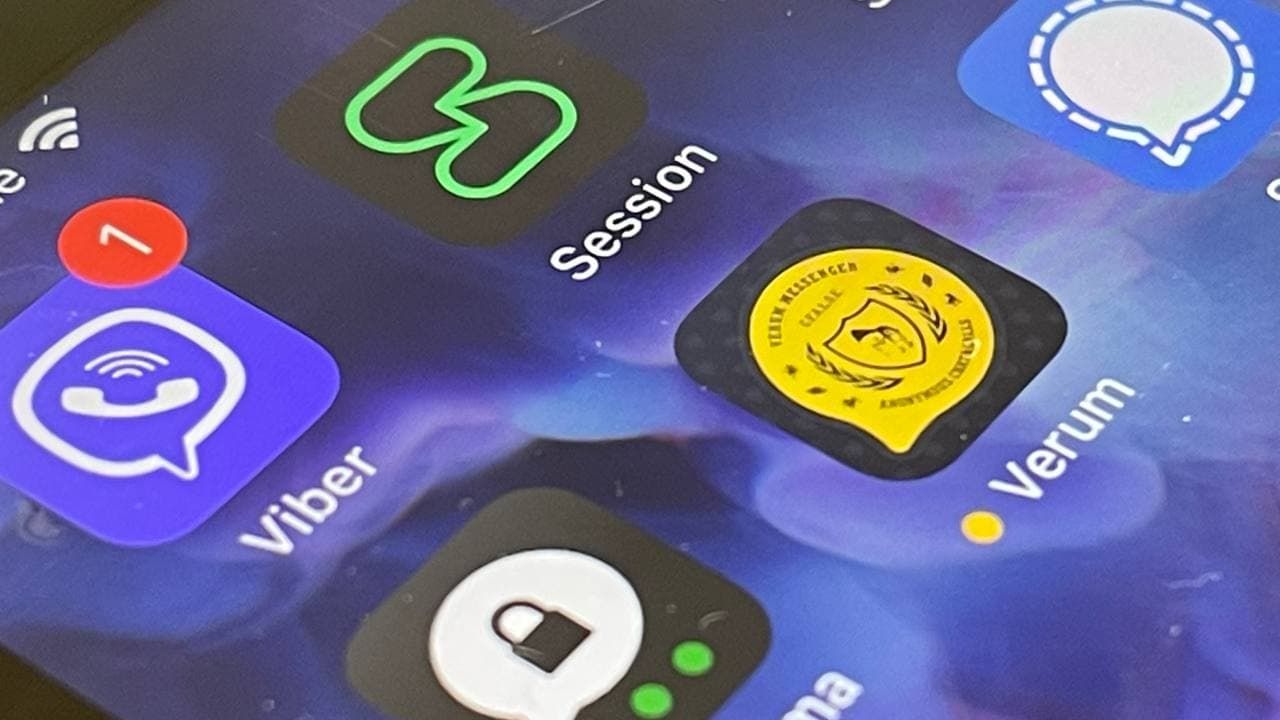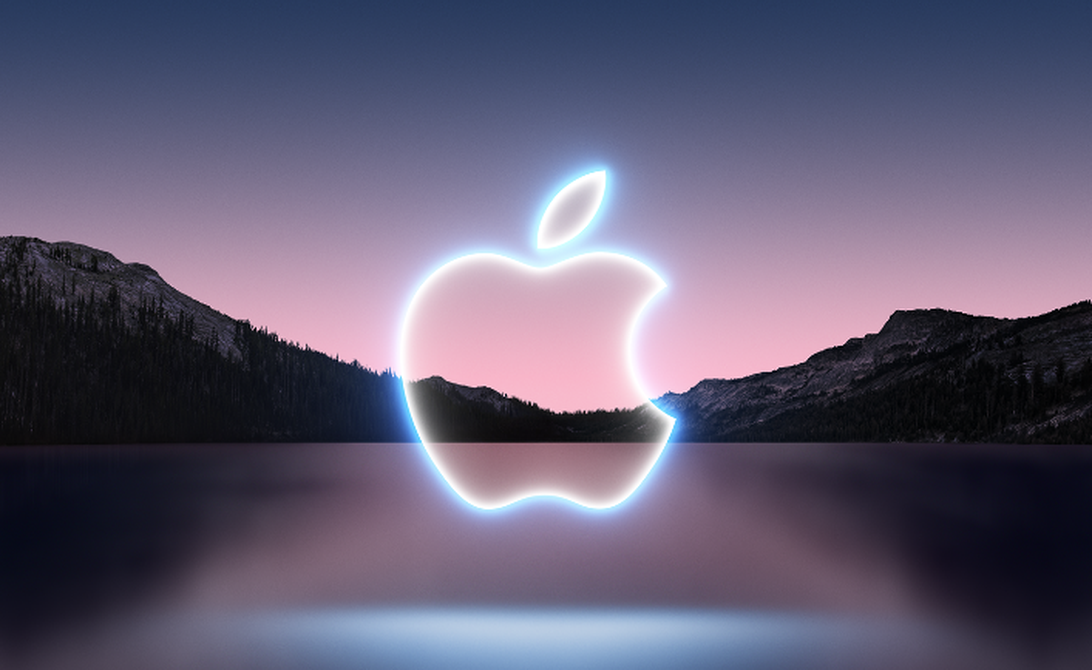Technologies
Best Desktop Computers for 2023: Top Dell, Mac and More Picks
Looking for a new computer? Here are our expert opinions on the best desktop computers around from Dell, Apple, HP and more.

Laptops and tablets may offer on-the-go convenience, but the best desktop computers provide incredible specs and features that aren’t easily outmatched. Despite this, only one-fifth of computerssold these days are desktops. Don’t let that number deter you, though, because once you see what a trusty desktop has to offer, you’ll realize why they’re worth considering for your next purchase. The best desktop computers are incomparable.
The best feature of desktop PCs is the durability and longevity they provide. Not only are desktops built more solidly, but not moving around much contributes to far less wear and tear than your conventional laptop will see. And another of the best desktop PC features is that you can get a decent bit more power and expandability than you could from a laptop, along with a powerful processor and a higher-quality hard drive or solid-state drive for storage. That processor power and storage potential are particularly crucial if you’re planning to use your personal computer as a gaming PC or a graphics-editing powerhouse.
A desktop computer is generally going to come in the form of either a tower or an all-in-one (with an integrated screen), though there are smaller designs for tighter spaces. And while you can find Windows and Macs for as little as $500 to $700, Chrome and Linux fans have plenty of affordable options, too.
While laptops still occupy the majority of our editors’ time and effort with CNET’s hands-on reviews, we’ve rounded up recent products to bring you the very best desktop computer options, which are listed below. This list starts with models we’ve tested, and then moves on to more generic configurations. We haven’t explicitly tested those specific models in the latter batch, but the specs listed should deliver considerable value for the price, based on our experience with similarly configured laptops we’ve tested. Unless otherwise indicated, the products listed below don’t include a monitor, keyboard, mouse or webcam. You’ll need to bring your own or buy them separately. We update this best desktop computer list periodically.
Desktop PCs: Tested and recommended
These are the best desktop PC models that we’ve recently tested and can recommend based on our hands-on experience.
Other recommended desktop PCs
We haven’t reviewed the specific models below, but we have reviewed systems using very similar hardware. These general configurations should serve you well, especially if you shop around for frequent deals.
Basic Windows PC tower (starting around $620)
The specs we’d suggest for a basic Windows 10 or Windows 11 machine:
- Intel Core i5 (11th-, 12th-gen) or AMD Ryzen 5 (3000 or 5000 series)
- Default integrated graphics (such as Intel 730 or baseline AMD Radeon)
- 512GB or larger NVMe SSD drive
- 12GB of RAM or more (16GB preferred)
- Four or more USB 3.1 or 3.2 ports with USB-C and USB-A formats (at least one or two on the front)
- Wi-Fi and Bluetooth wireless
- At least one PCI-E (x16) expansion slot (for adding a video card)
- A DVD or Blu-ray optical drive (if you need it for legacy software or media)
With those specs in mind, you should be able to find a good PC tower from brands like Dell, Acer, Asus or HP for between $500 and $600. Here are some that fit the bill, offering a great bang for the buck if you don’t need a laptop:
Acer Aspire TC-895-UA92 (under $710)
Aside from a slightly older 10th-gen Intel Core i5 CPU, this configuration otherwise includes everything listed above, along with Wi-Fi 6 compatibility and a keyboard and mouse, too.
HP Pavilion Desktop TP01-2040 (under $650)
This system offers a capable AMD Ryzen 5 CPU, and HP throws in a mouse and keyboard.
PC tower for light gaming and creative duties (starting around $900)
Want to do some PC gaming, or do you spend time editing photos or video? You’ll want to level up the preceding configuration with more RAM and better graphics options. Expect price points to be between $800 and $1,200 — and even higher if you go for a more bleeding-edge video card.
- Nvidia GTX/RTX or AMD Radeon RX graphics card (GPU)
- 16GB of RAM or more
- 350-watt (or more) power supply
Looking for a gaming computer with more muscle? Check out our list of best gaming PCs.
HP Pavilion Gaming Desktop (under $1,000)
This HP rig boasts an 11th-generation and Nvidia GeForce GTX 1650 GPU and 16GB of RAM.
Basic Windows All-in-One (starts around $800)
An «all-in-one PC» (also known as AIO PC) is basically a Windows version of an iMac. That means the PC «guts» are essentially built into a monitor or its base. Unlike the PC towers listed above, all-in-ones generally offer no ability to upgrade the graphics card, and maybe not even the storage or RAM. The advantage is having fewer cables, however, since everything is integrated into the body.
Recommended specs for an all-in-one are mostly similar to the basic tower above, albeit with compromises because of space considerations. Don’t expect an optical drive, for instance, and know that performance is often a step down from «real» desktop models because some all-in-ones use laptop components to better maximize available space. You’ll want a large screen with good resolution. The sweet spots we’d suggest are:
- 24 inches at 1,920×1,080 pixels (aka 2K or 1080p)
- 27 inches at 2,560×1,440 pixels (aka 1440p)
- 32 inches at 3,840×2,160 pixels (aka 4K)
The 24-inchers are good for kids, but adults should probably go for 27 inches and up. Expect to pay at least $800 at that latter size, especially if you want to avoid underpowered Intel Core i3 or AMD Athlon CPUs. The HP Envy 32/34 and Apple iMacs are examples of high end all-in-one computers, but here’s a more reasonably priced alternative.
Acer Aspire C27-962-UA91 ($995) (Update: Currently unavailable)
While the screen on this Acer Aspire model is a spacious 27 inches, resolution is only 1080p (also known as 2K) — but that’s par for the course below the $1,000 price point. This model also lacks a DVD drive and USB-C ports. That said, you get a 10th-gen Intel Core i5 CPU, on-board Nvidia MX graphics (not as good as a GTX or RTX card, but better than average), half a terabyte of SSD storage and a built-in webcam (along with a keyboard and mouse).
HP All-in-ones (recommended models starting at $800)
Back in early 2020, we reviewed the HP Envy 32, a Windows take on the basic iMac design. At that time, it had somewhat dated specs: a ninth-gen Intel CPU and a spinning hard drive backing up the 256GB solid-state drive. The 32-inch model appears to have been discontinued, but HP maintains a stable of current models in 22- to 27-inch screen sizes, with a new $2,000 34-inch HP Envy 34 now living at the top of the line.
What about a Mac Pro?
While you’re paying a big premium for the Apple name, an iMac is generally a great option for Apple fans who want an all-in-one computer with a superior display. And now that the 24-inch iMac has gotten a nice overhaul, complete with the M1 chip, that’s a great starting point. And while the 27-inch iMac is no more, the new Mac Studio starts at $2,000, and offers some serious power, especially if you ramp up to the M1 Ultra chipset.
Need even more power? While Apple has a Mac Pro living at the top of its desktop line, the current model is an aging Intel design, which the company has already pledged to replace with an Apple Silicon version. If the Mac Studio can’t handle your high-end Apple needs, we’d strongly recommend steering clear of the Mac Pro until that new version hits.
Chromebox, Mini PCs and other niche options
When it comes to desktop PCs, towers and all-in-ones represent the vast majority of the market. There are alternatives, but in the 2020s, they generally represent increasingly narrow slices of that market.
Mini PCs: Following the debut of the Mac Mini in 2005, Windows PC makers experimented with similarly tiny designs. In the wake of likable small models like the Acer Revo One and HP Pavilion Mini, we even saw (woefully underpowered) «PC on a stick» offerings starting in 2015, but interest seems to have ebbed since then. Outside of specialty vendors like Beelink, the best choices in this mini PC size are probably the Intel NUC (Next Unit of Computing), most of which are sold as hobbyist options, requiring some BYO additions like user-supplied storage, RAM and other components — including the operating system. See more bare-bones Mini PCs at Newegg.
Chromeboxes: If you’re looking for very basic computing — browsing the web, email, social media, YouTube and the like — the Chrome operating system is the most affordable route for home computing. This Google operating system effectively is little more than the Chrome web browser. That makes it easy for multiple users (only a Gmail address is needed to log in), and — because there’s no heavy operating system beyond the browser — viruses aren’t really an issue. Colloquially known as «Chromeboxes» (versus a «Chromebook» laptop), these systems don’t have beefy CPUs, RAM or storage requirements. That said, if you need any software beyond browser-based web apps, or if you don’t have excellent broadband, you’ll want to stick with Windows or Mac options above. Now, before you spend any money, you should check out the free version of the operating system known as ChromeOS Flex, which you can install on most old PCs (including running it from an attached USB drive). But if that’s not an option and you want to buy new, expect to pay between $200 and $500 for a Chrome-based desktop. However, the closer you get to that $500 price point, the more you should consider stepping up to a Chromebook laptop or a basic Windows tower (see above) for just a bit more. See Chromebox options at Newegg.
Linux PCs: No, Windows, Mac and ChromeOS are not your only operating system options. There’s a wide world of Linux operating systems out there, many of which are effectively free. You can get PCs with Linux preinstalled, but the better, more affordable option is probably installing it (or dual-booting) on a used Windows PC. See Linux PC options at Newegg.
Raspberry Pi: You may have heard of a small computer that’s no bigger than a paperback book, and can be had for about $150. That’s the Raspberry Pi, and it’s 100% real and very cool — if you’re a hobbyist looking to build your own Lego-style computer and install your own custom Linux operating systems. We just wouldn’t recommend it as a primary computer if you’re looking to run mainstream software. See the Raspberry Pi 4 kit at Amazon.
Technologies
Connect Your iPhone or Android to Any TV: A Guide for AirPlay, Chromecast and HDMI
When visiting friends and family, you can likely share videos from your phone to your TV without needing to log in to any built-in apps.

When visiting your friends and family this holiday season, you may want to show off your latest photos or stream movies to their television while spending time together. However, it can be a pain to log in to your streaming service account on someone’s television.
Thankfully, with most recent televisions, you probably don’t need to log in at all to do this. In most cases, the phone you carry right now can connect directly to a TV, and you can share or cast your screen using your own accounts saved on your phone.
Many TVs now ship with built-in support for AirPlay, Chromecast or Miracast, all of which let you wirelessly connect your phone. The trickiest part isn’t whether you can connect your phone to your TV (because you probably can). Rather, you’ll need to know which wireless casting connection your phone supports and make sure the TV you want to connect to also supports it.
We’ll talk about how this works, based on whether you’re using an iPhone or an Android phone. We’ll also point out when you’ll be using AirPlay, Chromecast or Miracast to make the connection, depending on what device you have.
iPhone supports AirPlay and Chromecast
Apple’s iPhone devices have two ways of connecting wirelessly to a television. On a system level, an iPhone can use AirPlay to cast media from video and music apps to any device that also supports AirPlay. This originally was exclusive to the Apple TV, but AirPlay now supports many televisions made by Samsung, LG, TCL and Vizio, along with Roku’s streaming devices. Odds are if your device supports the Apple TV app, somewhere in its settings is also support for AirPlay.
You can access AirPlay in one of two ways. If you’re using a supported app like Paramount Plus, you’ll want to tap the AirPlay icon represented by a TV with a triangle. You can also access AirPlay from your phone’s Control Center by tapping the icon represented by two rectangles and then picking the device you’re casting to. Using the latter option, you can also mirror your phone’s screen to your TV to display apps like Instagram or TikTok that don’t include AirPlay from within.
If you are trying to connect with a television with the Google TV operating system or the Google TV Streamer, the iPhone also supports Chromecast. Similar to using AirPlay from a media app, you’ll tap the Chromecast icon represented by a rectangle with three wavy lines. You’ll then tap the device you want to cast to. The biggest difference between how AirPlay and Chromecast work on the iPhone is that you won’t be able to mirror your iPhone’s display over Chromecast.
Certain apps like YouTube will blend these casting options together for convenience. When tapping Google’s Chromecast button, a submenu will let you choose between using AirPlay or Chromecast or linking directly to your TV’s YouTube app using a code.
And if you want to connect your iPhone to your television using an HDMI cable, you can use either a USB-C to HDMI adapter if you have an iPhone 15 or newer or a Lightning-to-HDMI adapter for the iPhone 14 and earlier. That adapter will allow for screen mirroring without using AirPlay.
Android always supports Chromecast, sometimes supports Miracast
Android phones don’t support AirPlay, but they sometimes support two wireless casting options that connect to nearly any television.
First, all Android phones include Chromecast support. So if your TV has Chromecast built-in or has a Google TV streamer attached, you’ll be able to connect your phone by tapping the Cast icon from an app. You can also set up a screen cast shortcut in the quick settings drop-down panel, which will provide an even faster way to quickly cast to your TV. CNET’s Nelson Aguilar has put together a guide for this.
And while it’s not supported on every Android phone, Samsung and Motorola both make Android phones that support Miracast for screen mirroring. These features are labeled as Smart View and Ready For, respectively, and will let you connect your phone to televisions or displays that support a setting that’s often labeled Screen Mirroring. More recent Motorola phones, like the Razr Ultra, are calling this feature Smart Connect. What’s unique about Miracast is that many Windows PCs also support this style of casting, and during my recent trip, that came in handy in order to play some Jackbox Games.
An additional note about these features from Samsung and Motorola is that both support connecting your phone to a television or computer monitor using a USB-C to HDMI cable, should you have one on hand. This could be particularly helpful if you’re trying to do a more data-intensive activity on your phone, such as connecting to a bigger screen in order to use your phone more like a computer.
More tips about wirelessly connecting your phone to a TV
Even though many televisions and streaming devices support one or more of these methods, it’s still entirely possible that when traveling, you won’t have a perfect match. For instance, you might have an Android phone, but the TV in your hotel room supports only AirPlay or blocks access to the HDMI port. But for home use, now that many televisions support multiple connection options, you have a good chance to be able to set up a method that works for day-to-day viewing.
You’ll also want to keep in mind that much like with video streaming, your network could also affect how effective a wireless connection will be to your TV. With that in mind, you will want to have your phone as close to a router as possible, which will help with the connection. If your video quality degrades while streaming, you may also want to turn casting off and on again to reset the connection.
But as long as your phone and television can connect with one of the above methods, you should otherwise be free to stream any movie or music from your phone onto your TV.
Technologies
Want to Save Some Cash After the Holidays? Check Out These 18 Hidden Amazon Prime Perks
Prime members can get cheaper gas and groceries, plus unlimited photo storage.

You already know that your Amazon Prime membership is great for free two-day shipping. But what about all the other perks? Whether you’re prepping for New Year’s Eve festivities on a budget, or just trying to save some cash as the holidays wind down, this service has a ton of hidden benefits waiting for you.
From discounted gas to streaming extras, there’s a lot more value packed into your Prime membership than most people realize, and a lot of those discounts can be used beyond Amazon.
You can take advantage of limited-time deals with a 30-day free trial, but that only lets you scratch the surface of all that a membership has to offer. It might surprise you to learn what else you can get by being a Prime member. Below, we’ll break down some of the best perks you may not know about.
Spoiler: Some of them are bangers.
For more, check out the latest Amazon products and see how you can get great savings on Amazon right now with coupons.
1. Watch HBO or other premium TV channels without cable
You probably know about Prime Video and Amazon Music Prime but you might not know all the special details. Amazon Prime members have access to a large number of feature-length movies and hit original TV shows like The Boys and The Lord of the Rings: Rings of Power, as well as an Amazon Music Prime library featuring 2 million songs and thousands of curated playlists.
Prime members can also download movies and TV shows for watching later offline.
If a show or movie you want to watch is not included as part of your basic Prime subscription, you can subscribe to premium channels such as HBO, Showtime and Starz for $5 to $15 a month, with no need for cable or satellite service.
Music lovers can upgrade to Amazon Music Unlimited to get a library of 90 million songs that can be streamed to multiple devices for $9 a month or $89 a year.
2. Get money back by choosing no-rush shipping
If you don’t need your purchase to be delivered quickly, you can opt out of two-day or shorter delivery options by selecting «no-rush shipping» and receive your package in about six days. In return for your patience, Amazon will give you rewards.
There’s no standard for no-rush shipping rewards — they vary from item to item — but they generally provide discounts on products and services that you might buy from Amazon.
Some common rewards are $1 credits for Amazon digital services like movies, music and ebooks, $3 coupons for Amazon’s Happy Belly-branded snacks, $10 to $20 off TV or furniture purchases and $10 to $20 off Amazon Home Services.
The value of no-rush shipping will depend on whether you’ll use any of the rewards. It might not seem like much, but a few no-rush shipping selections could easily earn you the $3 to $4 you need for a free movie rental from Prime Video.
3. Whole Foods grocery discounts
If you’re a frequent shopper at Whole Foods, an Amazon Prime membership can reap serious dividends. Prime Member Deals available in physical Whole Foods stores give members discounts of 10% to 20% on selected items marked with blue Amazon stickers.
Yellow tags indicate even further savings, usually at least another 10% off an already discounted price. Prime members who scan the Whole Foods Market or Amazon app at checkout get an extra 10% off storewide sales. Prime membership also gives you access to special online deals.
4. Exclusive access to Thursday night NFL football games
It’s the second year that Amazon Prime has had exclusive rights to air Thursday Night Football, and Prime seems to be killing the game. It received five Sports Emmys nominations for its 2022 coverage and boasts a stacked cast of experts, commentators and former players.
If you are a Prime subscriber, you can stream 2025-2026 Thursday Night Football games on Prime Video, NFL +, Amazon.com or Twitch. There is also a Spanish-language broadcast available on Prime Video. Pregame coverage begins at 7 p.m. EST each Thursday.
5. Free same-day Amazon Fresh delivery
Whole Foods isn’t the only grocery option available to Amazon Prime members. Subscribers also have access to the online grocery store Amazon Fresh, which provides free deliveries to some locations. Amazon Fresh has some similar products to Whole Foods but generally focuses on a broader range of groceries and home products at lower prices.
Anyone can purchase products from Amazon Fresh but only Prime members get free same-day delivery. Amazon Fresh also has 44 physical locations that offer special weekly deals for Prime members.
6. Free same-day delivery for perishable groceries
Similar to Amazon Fresh, a new service gives Amazon users access to perishable groceries with same-day delivery service. More than 1,000 cities and towns in the US can now get groceries delivered within hours and Amazon plans to expand the service to more than 2,300 locations by the end of 2025.
Same-day delivery is available to all Amazon customers for $12.99 but it’s free for Prime members who order at least $25 worth of groceries (it costs $2.99 if your order is less than $25). If you’re running low on milk and eggs and you don’t have time to make a trip to the grocery store, this is a great way to stock up without leaving the house.
7. Borrow unlimited books, magazines and comics
Amazon Prime members gain access to Prime Reading, a service similar to Kindle Unlimited with a different collection of materials. You can borrow as many books as you like, and many include audible narration, so you can switch back and forth between reading and listening. The electronic downloads don’t require a Kindle or Fire device.
Amazon First Reads gives Prime members access to editors’ selections of early book releases. Anyone with a Prime membership gets one free Kindle book a month, as well as regular discounts on selected titles.
8. Prime-exclusive deals and promos
Amazon offers Prime-exclusive deals all-year round on top products meaning you can make back the cost of your membership in savings. For big shopping seasons like Black Friday or Prime Day, there are even more member-only prices to shop.
Plus, Prime subscribers often get early access to Lightning Deals. These are sort of like Amazon’s version of a fire sale, featuring very low prices for a limited number of products that usually sell out very quickly. The good news for Amazon Prime members is that they get access to these deals earlier than everyone else. The bad news? There are a lot of Amazon Prime members.
9. Exclusive Zappos deals, faster shipping and a test month for running shoes
Amazon acquired the online shoe giant Zappos in 2009, and it now provides a number of benefits for Prime members who link their accounts on Zappos.com. Prime members get faster shipping, bonus reward points for shopping and exclusive deals on certain products.
Zappos also lets Prime members participate in Runlimited, a 30-day guarantee program for running shoes.
10. Save money on prescription drugs online
Prime members have exclusive access to Amazon RxPass. The subscription service provides all of your eligible medications for a single payment of $5 a month, regardless of how many prescriptions you have. More than 50 commonly prescribed medications are available.
Amazon says that the average member with an RxPass saves 38% on medications but it’s important to note that Amazon’s Prime Rx savings program does not work with health insurance. You’ll need to be sure that any savings you get from the program are more than you’d get from insurance coverage.
11. One Medical membership discounts
One Medical is a membership-based health service that provides primary in-person and virtual health care. Its concierge-like medical service is designed to allow members to easily schedule appointments and care using the company’s mobile app or website.
Amazon acquired One Medical in 2023 and is now offering a major discount for Prime members. Instead of the usual price of $199 a year, Amazon Prime members can subscribe for $99 a year, or $9 per month. To activate the discount, Prime members should visit this page. Existing One Medical subscribers who are Prime members can also take advantage of the discount starting with their next payment.
12. Access to Amazon Luna
Amazon Luna delivers access to a library of games that you can play without paying a dime since they’re included with Amazon Prime and Prime Video. There is a rotating library of games that you can claim, including super popular options like the Fallout Series and XCOM2.
Along with single-player games, Amazon has added a GameNight section. These games are all multiplayer games that can be controlled with a smartphone, making it a great way to spend time with friends or family playing games. There are more than 25 options in GameNight include Ticket to Ride, Jackbox and Exploding Kittens.
13. Unlimited photo storage with Amazon Photos
With a subscription to Amazon Prime, you can store unlimited photos and 5GB of video on Amazon Photos. Without Amazon Prime, you’re limited to a total of 5GB of videos and photos total.
You can view or share your photos and videos on Amazon Photos using the iOS or Android app, or on a computer with the desktop or web app. Your photo and video files are fully encrypted, so they’re only visible to people with whom you intentionally share them.
14. Get discounts on Shutterfly
Amazon has partnered with photography company Shutterfly to offer Prime members 45% off most regular-priced products. Shoppers also can get free shipping on orders of $35 or more. To get the discount, you’ll have to link your Shutterfly and Amazon accounts.
If you store your photos with Amazon, you can now access your Amazon Photos directly from Shutterfly. This makes it extra convenient for Prime members to share images from their extensive photo library.
15. Get a free Grubhub Plus membership
Don’t feel like cooking tonight? There’s a perk for that, too.
When Amazon announced it would offer Grubhub Plus free for a year in 2022, it was a solid, but temporary, perk added to Prime. In 2023, Prime members were treated to another free year. For 2024, instead of renewing the food delivery service’s premium membership again for another year, Grubhub Plus became a permanent Amazon Prime perk.
Grubhub Plus typically costs $9.99 a month and provides unlimited free delivery for all orders over $12 in more than 4,000 cities nationwide.
16. Save on Amazon Kids Plus
If you have Amazon Prime, you also get access to discounted Amazon Kids Plus. The subscription service features a range of ad-free content, including books, games and videos for children ages 3 to 12. Parents can limit the amount of screen time available to their children and manage up to four profiles on iOS and Android.
The Amazon Kids Plus subscription is normally $79 a year but Prime members can get it for $48 a year.
17. Get your package on the day you want it with Amazon Day
If none of the usual delivery dates work for you, you have one additional option as a Prime member. Amazon Day is a free perk that lets you schedule your packages to arrive on your day of choice. Next time you’re on vacation, you don’t have to arrange for the neighbors to help you bring in your boxes, and you won’t have to worry about porch pirates stealing your delivery on days when you’re not home.
Amazon Day is also a great option to cut down on the number of boxes for your packages, as you can schedule multiple purchases to arrive as a single delivery.
18. Save money on gas
Do you spend several hours each week driving to and from work? If you’re an Amazon Prime member living in the US, your dollar will now stretch a little farther at the gas pump. You can save 10 cents per gallon at BP, Amoco and AM/PM gas stations — there are about 7,000 locations across the 50 states. Amazon estimates that this perk will save the average American nearly $70 per year.
To get the full 10-cent-per-gallon discount, Prime members must create a free earnify™ account and link it to their Prime account. You can use the earnify™ app to find stations, then simply go to the pump and enter your phone number or linked payment method for instant savings. (Using the earnify™ app is optional — it just needs to be linked to your Prime account.)
For more about Amazon Prime and what to expect from this year’s back-to-school deals. Plus, check out these Amazon deals on tech and home goods and tips for getting the best Amazon deals.
Technologies
Today’s NYT Mini Crossword Answers for Friday, Dec. 26
Here are the answers for The New York Times Mini Crossword for Dec. 26.

Looking for the most recent Mini Crossword answer? Click here for today’s Mini Crossword hints, as well as our daily answers and hints for The New York Times Wordle, Strands, Connections and Connections: Sports Edition puzzles.
Need some help with today’s Mini Crossword? Some of the clues are tough today — I thought maybe 1-Across was referring to the Grinch, or even Oscar the Grouch, but was I ever wrong! Read on for all the answers. And if you could use some hints and guidance for daily solving, check out our Mini Crossword tips.
If you’re looking for today’s Wordle, Connections, Connections: Sports Edition and Strands answers, you can visit CNET’s NYT puzzle hints page.
Read more: Tips and Tricks for Solving The New York Times Mini Crossword
Let’s get to those Mini Crossword clues and answers.
Mini across clues and answers
1A clue: Furry and green, say
Answer: MOSSY
6A clue: State known for its potatoes
Answer: IDAHO
7A clue: Like a faithful friend
Answer: LOYAL
8A clue: Had a beverage
Answer: DRANK
9A clue: Pronoun frequently paired with «her»
Answer: SHE
Mini down clues and answers
1D clue: Not spicy, as salsa
Answer: MILD
2D clue: Reasons for wrinkled noses
Answer: ODORS
3D clue: Words from a doctor checking your tonsils
Answer: SAYAH
4D clue: Comedian Gillis
Answer: SHANE
5D clue: Part of an egg used to make hollandaise sauce
Answer: YOLK
Don’t miss any of our unbiased tech content and lab-based reviews. Add CNET as a preferred Google source.
-

 Technologies3 года ago
Technologies3 года agoTech Companies Need to Be Held Accountable for Security, Experts Say
-

 Technologies3 года ago
Technologies3 года agoBest Handheld Game Console in 2023
-

 Technologies3 года ago
Technologies3 года agoTighten Up Your VR Game With the Best Head Straps for Quest 2
-

 Technologies4 года ago
Technologies4 года agoBlack Friday 2021: The best deals on TVs, headphones, kitchenware, and more
-

 Technologies4 года ago
Technologies4 года agoVerum, Wickr and Threema: next generation secured messengers
-

 Technologies4 года ago
Technologies4 года agoGoogle to require vaccinations as Silicon Valley rethinks return-to-office policies
-

 Technologies4 года ago
Technologies4 года agoOlivia Harlan Dekker for Verum Messenger
-

 Technologies4 года ago
Technologies4 года agoiPhone 13 event: How to watch Apple’s big announcement tomorrow
